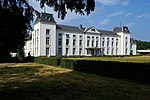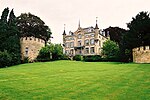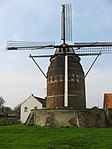Groeve Moerslag
All pages needing cleanupGeological monumentsWikipedia pages needing cleanup from August 2024

Groeve Moerslag is a limestone quarry and geological monument located in the municipality of Eijsden-Margraten, Netherlands. The above-ground quarry is situated on the Bukel, northeast of Moerslag in the Herkenradergrub, southwest of Sint Geertruid, and at the southern edge of the Eijsderbos, part of the Savelsbos. The open-pit quarry is located at the western edge of the Plateau of Margraten where it transitions into the Maas valley. Here, the plateau drops steeply several meters.
Excerpt from the Wikipedia article Groeve Moerslag (License: CC BY-SA 3.0, Authors, Images).Groeve Moerslag
Bukel, Eijsden-Margraten
Geographical coordinates (GPS) Address External links Nearby Places Show on map
Geographical coordinates (GPS)
| Latitude | Longitude |
|---|---|
| N 50.789619444444 ° | E 5.7598611111111 ° |
Address
Geologisch Monument Moerslag
Bukel
6265 NC Eijsden-Margraten
Limburg, Netherlands
Open on Google Maps









